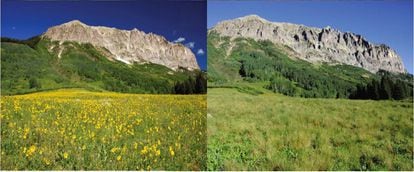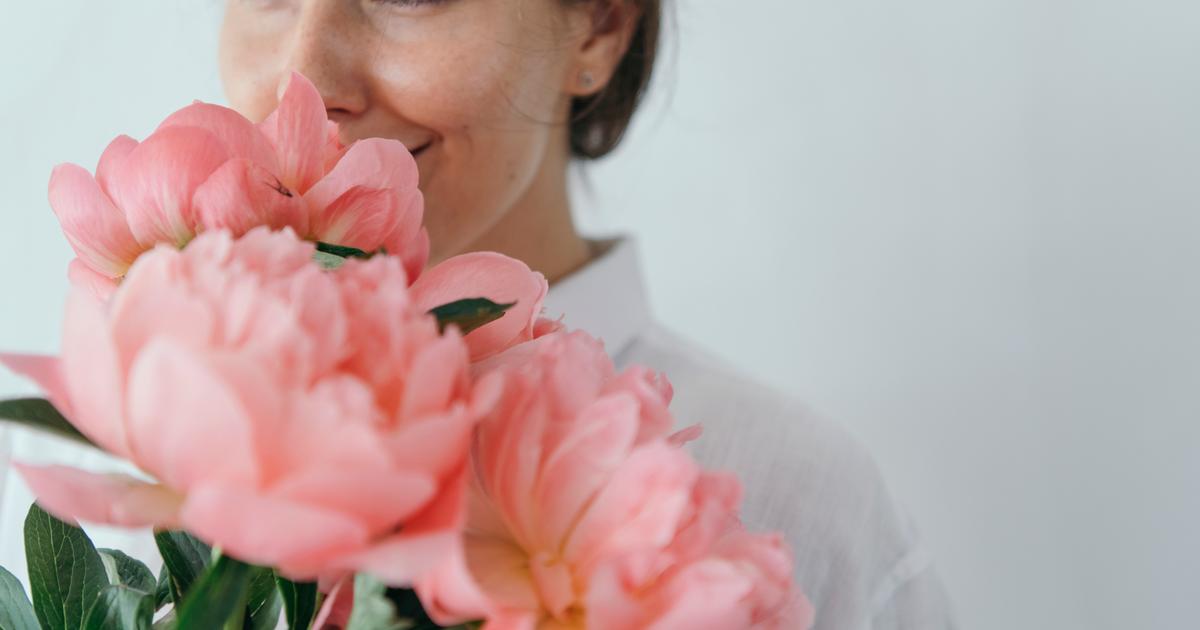The presence of flowers in a meadow is a differential factor.
Not only at the aesthetic level, but also at the climatic and humidity level, according to a study carried out by a group of American researchers has discovered.
Those soils covered with flowers reflected greater solar radiation than those fields with other vegetation, which made them have up to 1.2 ° C less temperature and 1% more humidity.
These variables, in turn, affect the living conditions for the fauna and the rest of the flora of that territory, and, according to the authors of the work, could help to combat global warming on a small scale.
More information
The animals are shrinking
The research was carried out at the Rocky Mountain Biological Laboratory located in Colorado (USA), at 2,900 meters above sea level. For this, 20 plots of 2x2 meters were delimited.
Helianthella quinquenervis
flowers were grown in ten of them.
(aspen sunflower) and in the other ten they were eliminated. In these plots, the flowers stood out above the rest of the vegetation, so they were the first to receive solar radiation. Each of these areas was surrounded by another 14-meter diameter circular plot with the same conditions (with or without flowers), which was part of another experiment. The experiment began in 2015 and lasted until 2019. However, the data for 2016 were not included due to logistical problems and a frost in 2018 damaged a large part of the flowers, so the sample is limited to the data collected in 2015 , 2017 and 2019. All measurements for these years were made in full sun and at the peak of flowering.
The key is in the amount of radiation that objects reflect, which is known as albedo. Light bodies reflect a greater amount of light, while dark ones absorb it and transform it into heat. Similarly, glossy surfaces reflect more light than matte ones. “Until now, the effect of the surface being more or less bright or more or less dark with respect to the ice at the poles or changes in vegetation between spring and autumn has been taken into account. But it hadn't occurred to anyone that the flowers, which have colors that are very different from the body of the plant, could also have an effect on the environment where they are, ”explains Alfonso Blázquez Castro, professor in the department of Biology at the Autonomous University of Madrid and one of the study authors,about which you have published an article in
The conversation
.
Difference in the albedo of the terrain where the study was made.
On the left with flowers, on the right without them.David W. Inouye
According to the report itself, "the moment in which the plants turn green and mature affects the absorption of carbon, the exchange of water and the albedo of the earth's surface", three factors that condition the microclimate of a territory. Although the decrease in temperature was only recorded in two of the three years dated, the researchers are confident that these changes in the microclimate may condition the temperatures of a larger region. “In large plantations for commercial use, such as corn, soybean or sunflower, if we have many thousands of hectares planted, the fact that these plants can reflect more or less light can have an important effect on the temperature of the region. It is relatively obvious in light of the results, but it is something that would have to be demonstrated, ”says Blázquez.
Another aspect on which they want to continue investigating is how these small changes affect the species that inhabit these areas and the rest of the vegetation.
"We suppose that if the temperature increases and the humidity decreases, it is foreseeable that this will suppose a certain stress for all forms of life in that area," says Blázquez.
The author confesses that the team's idea was to deepen this aspect throughout the year, but the heat wave that swept the US and Canada in early July has wiped out most of the flowers.
The key is in the amount of radiation that objects reflect: the albedo.
Light bodies reflect a greater amount of light, while dark ones absorb it
In the future, the team also needs to confirm whether this cooling process occurs in other ecosystems as well. Blázquez suspects that, since height is not a differential factor, this effect can be reproduced in other areas. "A priori it should be able to be extrapolated to any area where there is vegetation with bright flowers, either in height or at sea level," he considers. If so, the expert believes that it could help to plan the crops and reduce the impact that these can have on the temperature of any region.
Fernando Valladares, a researcher at the National Museum of Natural Sciences who has not worked on the study, assures that an investigation of this type had never been carried out on such a large scale, although he considers the results to be "modest". "As soon as you start taking into account all the conditions, that effect is diluted and it remains as something that refines, but not something that is going to change great things," he says. For the researcher, the result is not "as groundbreaking or as shocking" as the authors consider, although he understands that it can be useful to refine the climate simulation models that are currently used.
You can follow MATERIA on
,
and
, or sign up here to receive
our weekly newsletter
.









